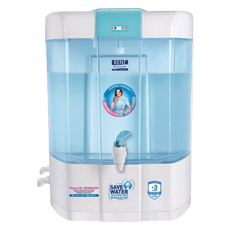Water from any natural source is generally heavily contaminated. Wells, rivers or reservoirs: drinking water directly without filtering it in a water purifier can cause many ailments. Even tap water that is said to be treated before reaching you has many pollutants. Therefore, it is imperative that you use a reputable and reliable water purifier to purify the water you eat.
Water purifiers in India come in a variety of types and brands, each claiming to be the best. Before complying with a water purifier, however, it is important to understand what kind of filter systems they provide and also how effective they are. Only then can you make an informed decision before you buy.
Water purifiers are generally classified into five basic types.
Type of distillation: these water purifiers distill water, ie. the aosmith water purifier is boiled and the vapors are collected to provide clean drinking water. This process successfully removes contaminants, sediments and microorganisms. The disadvantage of such water filters is that it is very slow and gives approx. one liter for each filtered ten liters. In addition, the distillation process does not allow oxygen to pass, reducing water quality.
Active carbon type: these types of water filters use carbon particles to filter the water. Pollutants and sediments in the water adhere to the carbon surfaces and you get clean water. It also effectively removes any odor that may be present. The disadvantage of this filter is that it cannot kill the microorganisms found in the water.
Type of backwash: water passes through a cleaning medium that traps sediments, residues and pollutants. There are many types of cleaning cartridges on the market. The disadvantage of this type again is that it does not kill harmful microorganisms.

Ultraviolet Filter: UV filters produce ultraviolet radiation, more intense than the sun, to kill microorganisms such as bacteria, viruses, algae, molds and oocysts present in the water. These filters are only most effective when the water passing through UV filtration is free of contamination. Sediments or pollutants in water can cause shadows and therefore prevent UV rays from reaching microorganisms.
As you can see, no filtration is enough to make the water safe to drink. The ideal combination would be the RO and UV water purification process. And that's exactly what Kent water purifiers offer you. The RO filtration step ensures that there are no impurities such as sediments, heavy metals, salts or other pollutants. This water is then passed through the UV filter to kill any microorganism that may be present. And what you get is clean, clean and safe drinking water.
No comments:
Post a Comment